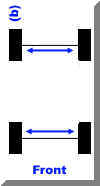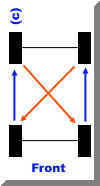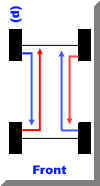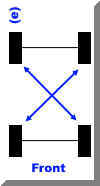Performance advantages, improved handling and traction and even wear are all advantages of tire rotation.
Tire rotation should be scheduled throughout the life of the tires, even if no wear is visible. A great rule of thumb is to rotate your tires when you change your oil (3,000 to 5,000 miles). This spreads the tire wear by using each wheel in as many positions as possible. Tire rotation is, in itself, not a cure for uneven wear. Tire pressure and mechanical maintenance are also a factor.
By creating even wear, the set of tires can be replaced all at one time. Buying your tires in sets maintains the handling and allows you to buy the tire industry's current improvements.





Tire rotation should be scheduled throughout the life of the tires, even if no wear is visible. A great rule of thumb is to rotate your tires when you change your oil (3,000 to 5,000 miles). This spreads the tire wear by using each wheel in as many positions as possible. Tire rotation is, in itself, not a cure for uneven wear. Tire pressure and mechanical maintenance are also a factor.
By creating even wear, the set of tires can be replaced all at one time. Buying your tires in sets maintains the handling and allows you to buy the tire industry's current improvements.
- On rear wheel or four wheel drive vehicles, rotate the tires in a rearward cross pattern (fig. A) or the alternative X pattern (fig. B)
- On front wheel drive cars, rotate the tires in a forward cross pattern (fig. C) or the alternative X pattern (fig. B)
- If you car has directional wheels or tires, rotate them as shown in fig D. If you car has non-directional tires that are a different size from front to rear, rotate them as shown in fig. E.








